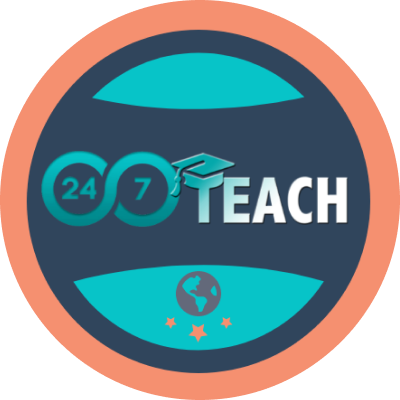Unlocking Study Success: Applying the 80/20 Rule for Efficient Studying
By: Justice Jones
24/7 Lead Superstar
Prefer to listen to this post? Click below.
Supercharge Your Study Techniques: Applying the Pareto Principle for Efficient Learning:
The world of academics is not devoid of life's inherent principles. One of these principles, the Pareto Principle or the 80/20 rule, is as germane to study techniques as it is to the spheres of economics and business. Today, we delve into this principle and explore how it can enhance your study outcomes.
The Pareto Principle, named after the Italian economist Vilfredo Pareto, posits that 80% of effects come from 20% of causes. In the context of studying, this suggests that 80% of your learning results are derived from 20% of your studying tasks. Identifying and focusing on this crucial 20% is key to an efficient and effective learning strategy.
Grasping the Pareto Principle
To truly harness the power of the Pareto Principle, one must first fully understand it. This principle is premised on a skewed balance, the quintessential 80/20 ratio that illustrates disproportionate effects. It is crucial to note that this ratio is not fixed but represents a typical distribution: a small number of causes often result in a majority of the effects.
In a study context, the principle suggests that a significant chunk of what you learn or retain comes from a smaller proportion of your overall study efforts. The challenge, then, lies in identifying and focusing on these high-impact activities.
Identifying Your High-Impact Activities
How do you identify the activities that form the critical 20%? Start by cataloging your study tasks. These could be reading textbooks, watching instructional videos, attending lectures, note-taking, doing homework, or group study sessions. Next, assess each activity's impact on your understanding and retention of the course material.
Often, activities that require active engagement—like problem-solving or teaching others—yield higher returns than passive activities like rereading notes. However, individual preferences and the nature of the subject matter can sway this balance. Therefore, reflecting honestly on which tasks help you comprehend and remember best is essential.
Optimizing Your Study Techniques
Once you've identified your high-impact activities, restructure your study routine around them. Channel more time and energy into these tasks. For instance, if you find that discussing topics with classmates in a study group dramatically improves your understanding, allocate more time to such interactions.
At the same time, consider how you can make lower-impact activities more effective. If rereading notes offers little help, can you transform this passive process into an active one by summarizing the content or forming questions as you read?
Applying Pareto to Time Management
Time management is an integral part of studying. Here, too, the Pareto Principle can be instrumental. Analyze your typical study day. Do you find that you're more productive at certain times? Perhaps your concentration peaks during the early morning or evening hours. That's your high-impact 20%.
Capitalize on these productive periods by scheduling challenging tasks or high-impact study activities during these times. Conversely, use your less productive times for low-impact tasks or necessary breaks.
A Balanced Approach
Despite the efficacy of the Pareto Principle, remember that it should not be used to eliminate 80% of your activities entirely. The goal is to optimize your efforts, not to cut corners. The 80% of your tasks that contribute to 20% of your results still play a role in your overall understanding and should not be disregarded.
Moreover, some topics or subjects might require a different approach or a varied combination of study techniques. Stay flexible and adaptable, adjusting your strategy as required.
In Conclusion
The Pareto Principle, when judiciously applied, can transform your approach to studying. It shifts the focus from mere quantity to quality, from broad efforts to targeted tasks that yield the most significant returns.
Embracing this principle requires introspection, trial and error, and continual adjustment. You might not hit the bullseye on the first try, but don’t let that discourage you. The more you explore and understand your study habits, the more effectively you'll be able to apply this principle.
Be patient with the process. Remember, it's about amplifying productivity, not about stringent adherence to the 80/20 split. The Pareto Principle serves as a tool for self-discovery, spotlighting the power of focused effort in a world that often equates busyness with productivity.
Also, consider the role of rest within this principle. If sleep and downtime fall within your 20% of causes that lead to 80% of your productivity, don't neglect them. Instead, honor the critical part they play in your cognitive processes and overall well-being. Remember, we're seeking sustainable study habits, not burnout.
Ultimately, the Pareto Principle can foster a paradigm shift in your approach to learning. By identifying and focusing on high-impact tasks, you can reduce stress, increase comprehension, and make your study time more productive. This principle, though simple in concept, can be truly transformational in practice. Harness its potential and elevate your study techniques to new, unprecedented heights.
While the Pareto Principle is an empowering guideline, it's essential to remember that everyone's 20% can look different. Your 'magic 20%' depends on your learning style, subject matter, and personal circumstances. Hence, you should continually tailor and refine your approach for optimal results.
In the journey of education, the Pareto Principle is a compass, not a map. It can guide you towards efficiency, but the terrain you traverse is uniquely yours. Use this principle as a tool to better navigate your educational journey, illuminating a pathway to more effective and efficient learning.
Did you know early intervention in academic challenges can make all the difference? If you're ready to bolster your teen's academic performance, schedule a complimentary strategy session with our dedicated 24/7 Academic Performance Coaches.












